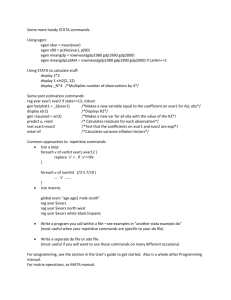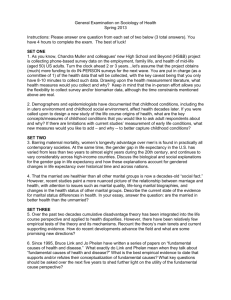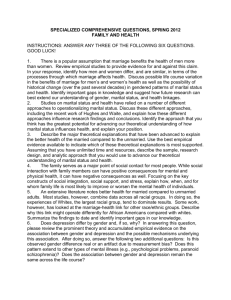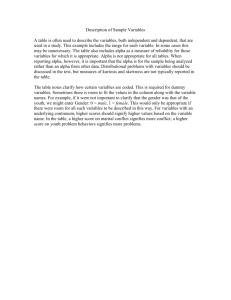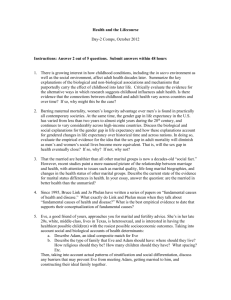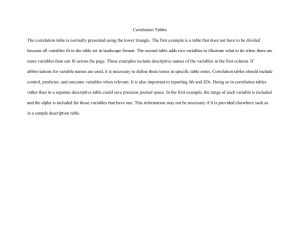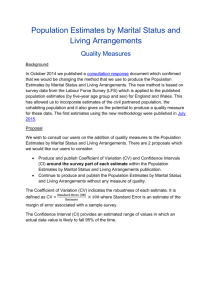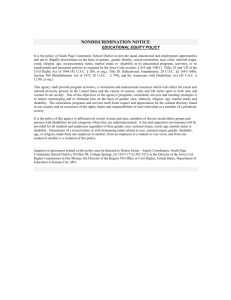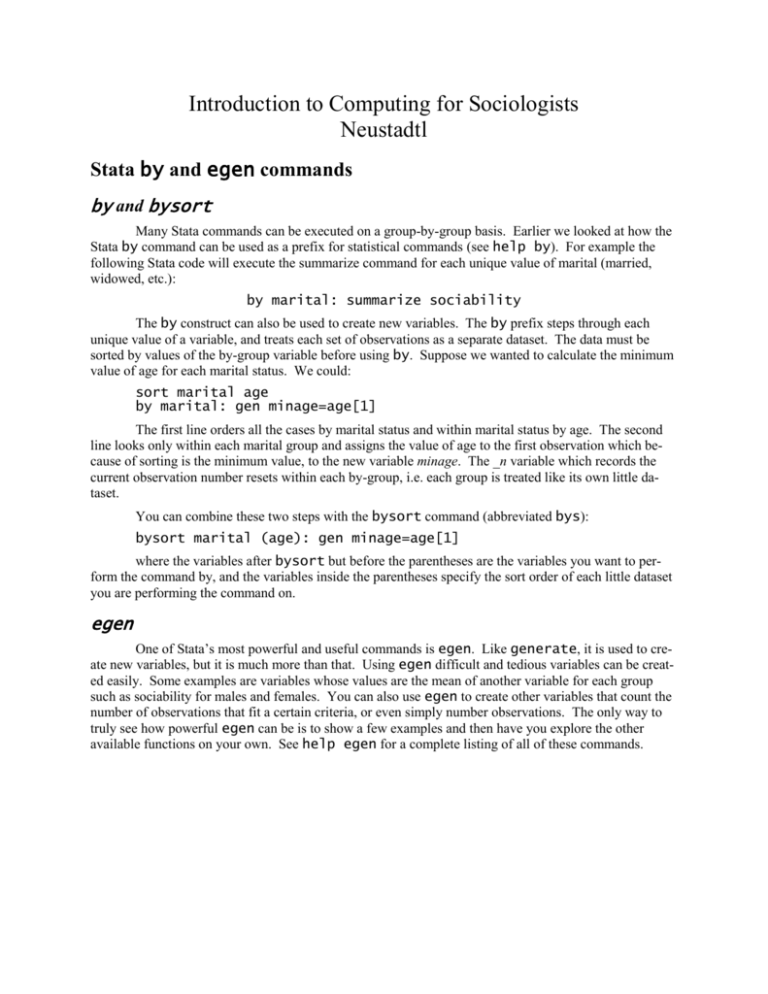
Introduction to Computing for Sociologists
Neustadtl
Stata by and egen commands
by and bysort
Many Stata commands can be executed on a group-by-group basis. Earlier we looked at how the
Stata by command can be used as a prefix for statistical commands (see help by). For example the
following Stata code will execute the summarize command for each unique value of marital (married,
widowed, etc.):
by marital: summarize sociability
The by construct can also be used to create new variables. The by prefix steps through each
unique value of a variable, and treats each set of observations as a separate dataset. The data must be
sorted by values of the by-group variable before using by. Suppose we wanted to calculate the minimum
value of age for each marital status. We could:
sort marital age
by marital: gen minage=age[1]
The first line orders all the cases by marital status and within marital status by age. The second
line looks only within each marital group and assigns the value of age to the first observation which because of sorting is the minimum value, to the new variable minage. The _n variable which records the
current observation number resets within each by-group, i.e. each group is treated like its own little dataset.
You can combine these two steps with the bysort command (abbreviated bys):
bysort marital (age): gen minage=age[1]
where the variables after bysort but before the parentheses are the variables you want to perform the command by, and the variables inside the parentheses specify the sort order of each little dataset
you are performing the command on.
egen
One of Stata’s most powerful and useful commands is egen. Like generate, it is used to create new variables, but it is much more than that. Using egen difficult and tedious variables can be created easily. Some examples are variables whose values are the mean of another variable for each group
such as sociability for males and females. You can also use egen to create other variables that count the
number of observations that fit a certain criteria, or even simply number observations. The only way to
truly see how powerful egen can be is to show a few examples and then have you explore the other
available functions on your own. See help egen for a complete listing of all of these commands.
egen age_cat1 = cut(age), ///
at(18, 25, 35, 45, 55, 65, 75, 90)
egen age_cat2 = cut(age), group(6)
egen sexfreq2 = mean(sexfreq1), by(marital)
egen sexfreq3 = mean(sexfreq1), by(sex marital)
egen numobs1 = count(sexfreq1), by(year)
egen numobs2 = count(sexfreq1), ///
by(year marital)
egen sexmar=group(sex marital), label
egen marsex=group(marital sex), label
egen sexmarcon=concat(sex marital), punct(/)
The cut function is useful for collapsing variables. You specify the
lowest value for each new group with
the at() option. Any observations
with a value less than 18 will be given a missing value for age_cat, and
all observations with a value greater
than 90 will be placed in the “90”
age_cat group. Or simply specify the
number of groups you want with the
group() option.
This example creates a variable that
is the mean of sexfreq1 for each
marital group. In addition to the
mean, other statistics can be calculated (e.g. min, max, sd).
The count function counts the
number of non-missing observations
of sexfreq1 within each year creating
a constant for each case. The second
example counts the non-missing values of sexfreq1 within year and within marital status.
The group function numbers the
groups formed by crossing sex and
marital. The groups are numbered
consecutively which makes this a
good variable to use in analysis. The
label option causes Stata to use the
value labels (if any) of sex and marital.
The concat function is useful when
you have two or more variables that
you want to combine to form one
variable but adding or multiplying
them would not make sense. The
p() option allows you to put a separator character between the values.
1. Use the rowmiss() function to create a new variable called socmiss for the sociability component
measures (socrel, socommun, socfrend, and socbar). Use tabulate to show the distribution of
missing values for these variables
2. Use the group() function to create a new categorical variable for every combination of race (by)
sex. Restrict race to white and black respondents (if can be used with egen). Use graph bar
and plot the 25th and 75th percentiles of sociability for these categories (look at the over() option).
3. Create a new variable avgsoc that is the average sociability within year and sex.

